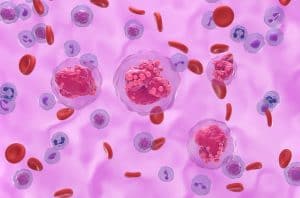
NICE rejects Lucentis in diabetic macular oedema
pharmafile | November 29, 2011 | News story | Sales and Marketing | Lucentis, NICE
NICE has rejected Novartis’ Lucentis for diabetic macular oedema.
NICE has not recommended Lucentis (ranibizumab) for the treatment of diabetic macular oedema in type I and II diabetes patients, due to issues of cost and uncertainties in Novartis’ data submission.
The watchdog said it did not believe the evidence presented by Novartis provided a true reflection of the cost-effectiveness for Lucentis monotherapy compared with the current standard treatment of laser photocoagulation, which uses heat to seal ocular blood vessels.
This decision follows hot on the heels of NICE’s final draft guidance to not recommend Lucentis for macular oedema secondary to retinal vein occlusion.
Sir Andrew Dillon, chief executive at NICE, said it could not recommend the drug as a clinically and cost-effective use of NHS resources, and said laser photocoagulation represented better value for money.
He added that the committee thought Novartis’ cost-effectiveness analyses were based on ‘implausible assumptions’, and that had a more plausible set of assumptions been used, the resulting cost per QALY gained would have exceeded NICE’s normal range.
Dillon said: “In particular, it was also noted that the manufacturer significantly underestimated the cost of treatment by not accounting in its submission the need to treat both eyes in a proportion of people with DMO.”
NICE’s guidance document shows that in clinical trials Lucentis was only used in one eye to treat DMO, and was sometimes used in the better of the two eyes, skewering its relative cost-effectiveness.
Dillon said that the committee was also concerned that patients’ sugar levels (glycaemic control) was much better in the trial population than it is in clinical practice.
Taking this into account suggested that the overall cost to the NHS would be higher in people with less well controlled glycaemic control than observed in the trial, pushing up the ICER cost of the drug.
Novartis had agreed a patient access scheme with the Department of Health, but NICE said that even with this discount, it was not enough to make the drug cost-effective.
Novartis speaks out
Novartis said it was ‘extremely disappointed’ with NICE’s final guidance and united with a number of other stakeholders to oppose the decision.
These included: The Royal College of Ophthalmologists, Royal College of Nursing, Royal National Institute of Blind People, Diabetes UK, the Juvenile Diabetes Research Foundation, who all petitioned the watchdog to reverse its decision.
Novartis said in a statement: “[We] believe that NICE did not consult sufficiently with clinical and patient experts on the additional data submitted by Novartis, following the initial ACD [appraisal consultation document].
“As a result, patients are being denied an important treatment which, in clinical trials, has been shown to double the likelihood of gaining vision and reduce the chance of losing vision by up to three-fold compared to laser treatment,” the company added.
Ben Adams
Related Content

NICE recommends migraine treatment for NHS use
The National Institute for Health and Care Excellence (NICE) has shared draft guidance recommending AbbVie’s …

GSK’s Jemperli recommended by NICE for endometrial cancer treatment
GSK has announced that the National Institute for Health and Care Excellence (NICE) has recommended …

NICE recommends SC treatment of AbbVie’s Tepkinly for patients with DLBCL
AbbVie has announced that the National Institute for Health and Care Excellence (NICE) has recommended …








